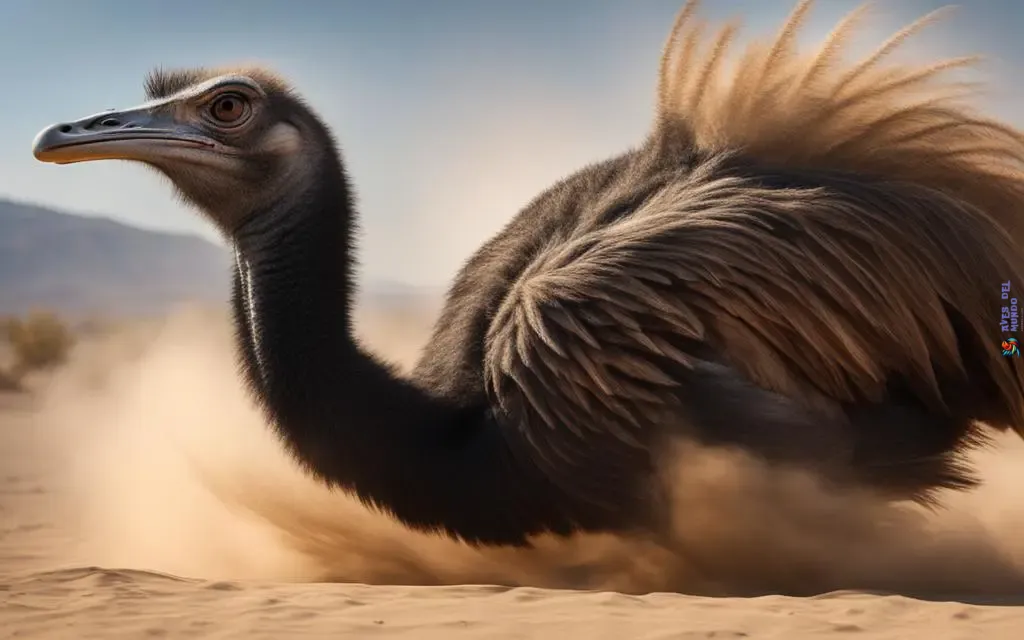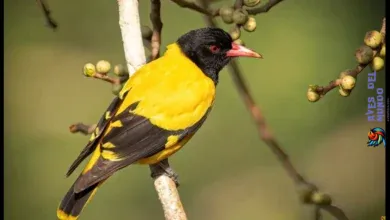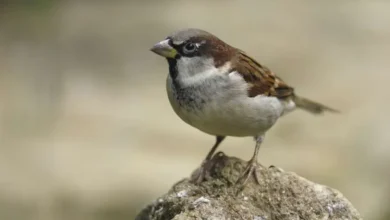Get ready to escape into the wonderful world of ostrich curiosities and leave with new intriguing knowledge about these unique creatures! Known for their unusual habits, ostriches possess a range of intriguing traits that make them stand out from other birds. In this article, we will delve into some of their weird and fascinating characteristics that make them a subject of curiosity. From their massive height to their swift running, we will explore all the amazing ways they have adapted to their natural environment. So, let’s start with the basics and uncover the rooted history of these fascinating creatures.

The Rooted History of Ostriches
Despite being elusive creatures, Ostriches have a fascinating history that dates back to over 40 million years ago. These flightless birds are native to Africa and are considered the largest birds on the planet.
Ostriches evolved to become the remarkable creatures we know today due to their specific living conditions and adaptation skills. They are known to have unique characteristics and peculiarities that make them one of nature’s wonders.
One of the most distinctive features of ostriches is their wings, which despite being useless for flying, they help the birds maintain balance and change direction while running. Their sturdy legs, on the other hand, allow them to sprint up to 45 miles per hour – the fastest land speed for a bird.
Another remarkable trait is their ability to lay eggs that can weigh up to 3 pounds and be the size of a melon. The eggs can also withstand high levels of temperature and rough handling during incubation and hatching process.
With ostriches’ unique and charming peculiarities, it’s no surprise researchers and nature enthusiasts alike remain ever-curious about these splendid creatures.
Surprising Physical Traits
Aside from their remarkable height and size, ostriches possess unique physical traits that have been honed through years of evolution. From their long legs to their muscular wings and beaks, these incredible birds have developed characteristics that enable them to survive in their natural habitats.
Ostriches are the largest birds in the world, reaching up to 9 feet in height and weighing around 220 pounds. Their long legs, which are among their most striking features, are adapted for speed, allowing them to run at speeds of up to 45 miles per hour. Their wings, despite being deemed flightless, are not useless. They serve as stabilizers when running at high speeds and, when opened, create a visual distraction for their predators.
Their beaks are another unusual feature. They have a prehensile tongue that helps them manipulate food as they swallow, and their beak is strong enough to crack open tough nuts and seeds. Their eyes are also unique, being the largest of any land animal and measuring up to 2 inches across. This allows them to observe their surroundings from a great distance, and their eyes are essential in spotting predators.
The Ostrich Table of Physical Traits

| Trait | Description |
|---|---|
| Height | Their impressive height and size make them the largest birds in the world, reaching up to 9 feet in height and weighing around 220 pounds. |
| Long Legs | Ostriches have long legs that are adapted for speed, allowing them to run at speeds of up to 45 miles per hour. |
| Wings | They may not be able to fly, but their wings serve as stabilizers when running at high speeds and create a visual distraction for their predators. |
| Beak | Their beak is strong enough to crack open tough nuts and seeds, and they have a prehensile tongue that helps them manipulate food as they swallow. |
| Eyes | Ostriches have the largest eyes of any land animal, measuring up to 2 inches across, which allow them to spot predators from a great distance. |
| Feathers | Their feathers are soft and fluffy, and serve to regulate their body temperature, keep them warm in the cold, and cool in the heat. |
The impressive physical traits of ostriches make them truly unique creatures. Their characteristics testify to their exceptional abilities, adaptations, and survival strategies.
Curious Courtship Rituals
Male ostriches have some unusual habits when it comes to courting females. They perform an elaborate dance routine that involves spreading their wings and tail feathers and fluffing them to appear larger. They then drop to their knees and sway their heads back and forth in a rhythmic motion as a way to display their dominance and attract a mate. This dance can last for several minutes and may be repeated many times during the mating season.
Female ostriches also participate in the courtship ritual by laying their neck on the ground and flapping their wings while swaying their head up and down. This behavior signals that they are ready to mate.
Interestingly, ostriches have been known to form «polygynous» relationships, where one male mates with multiple females. This unusual behavior is thought to be a survival strategy, as it allows for a single male to fertilize many eggs and increase the overall chances of successful reproduction.
«The courtship rituals of ostriches are truly fascinating and highlight the unique behaviors and characteristics of these incredible birds.»
Beyond the Egg
Ostriches not only have peculiar courtship rituals but also unique nesting behaviors. Their nesting is communal, and each ostrich hen lays her eggs in a single communal nest, which can contain between 15 and 60 eggs. This unusual habit helps protect their eggs by increasing the chances that some will survive predation.
Once the eggs are laid, both males and females take turns incubating them. Males incubate the eggs during the day, using their black feathers to absorb heat from the sun, while females take over the incubation duties at night when the temperatures drop. This shared parental responsibility emphasizes the unusual but effective social structure of ostriches.
Incubation lasts for 42 to 46 days, and hatchlings emerge from their eggs weighing approximately two pounds. They have fuzzy feathers that protect them from the harsh environment, and within a few days, they can keep up with their parents and already demonstrate their unique characteristics.

The young chicks grow rapidly, increasing their weight by about a pound per week. They are weaned at four months and reach sexual maturity between two to four years, depending on the sex and environmental conditions.
Despite their successful reproductive habits, ostrich populations are still facing various challenges in the wild due to human activities and habitat destruction. Protecting their unique characteristics and unusual habits is crucial to preserving this incredible bird species for future generations.
Speed Demons: Ostrich Running
Ostriches are special in their ability to run. They have small wings, but they can sprint at astonishing speeds. These curiosities are the fastest birds on land, capable of reaching speeds of up to 43 miles per hour! Their long legs are designed to cover large distances while running, and their unique characteristics help them sprint with ease.
The ostrich’s running technique is also unique. They have a two-toed foot with an enlarged claw used for defense, and they strike the ground with their toes, which spreads their weight evenly over a larger surface area. This feature minimizes the impact of the foot on the ground, making them less susceptible to injury when running at such high speeds.
Their long legs are muscular and strong, well suited to cover immense distances covering up to 16 feet in strides. An average ostrich will take about two steps a second, signaling their lightning-fast speed that can cover the length of a football field in only 6 seconds!
These unique features play a significant role in ostrich survival. Their tremendous sprint allows them to escape from predators such as lions, cheetahs, and hyenas that pose a threat in the wild. When running, they can outpace threats by zigzagging in different directions, confusing attackers.
Their unique characteristics make observing ostriches a rewarding experience. Although they are still hunted for sport and meat, ostriches are now raised on farms around the world due to their unique eccentricities, making them a cultural symbol for many cultures.
Dining Habits of Ostriches
Did you know that ostriches have a unique digestive system that enables them to adapt to their environment? These amazing birds are omnivores and feed on a diverse range of foods, including plants, insects, and small animals. Let’s explore some of their intriguing dining habits.
Diet Preferences
Ostriches have a preference for succulent plants that contain high water content, especially during dry spells. They also consume fruits, berries, and seeds, supplemented with insects, lizards, and small rodents. Their diet can vary depending on the season and region, as they adapt to the availability of food.
Foraging Techniques
Ostriches use their beaks to pick up food from the ground, and they can also dig with their strong legs to unearth roots and tubers. They are known to swallow small rocks, which help them grind their food in their muscular gizzard, aiding in digestion.
Specialized Digestive System
The ostrich’s digestive system is unique, with a three-chambered stomach that helps to break down their food. Unlike other birds, ostriches do not have a crop, which means that their food passes more quickly through their digestive tract, allowing them to feed more frequently.
Survival Adaptations
Due to their adaptation to arid environments, ostriches can survive without water for days. They obtain the required moisture from the plants they eat and conserve it through their kidneys. During the breeding season, male ostriches can go for extended periods without water while incubating eggs, a survival strategy that has enabled them to thrive in harsh conditions.
Ostrich Communication Methods
Ostriches are social birds that use various methods of communication to interact with their own species. Due to their unique characteristics, ostriches have developed communication methods that are quite intriguing and fascinating to observe. Below are some of the communication methods that ostriches use:
- Vocalizations: Ostriches’ communication through sounds is an important aspect of their social life. They use different sounds to convey various messages and express emotions. From grunts, hisses, and snorts to whistles and booming sounds, each vocalization has its meaning.
- Body Language: Ostriches have a complex body language system that includes various postures, movements, and gestures that convey different messages. The positioning of feathers, head, and neck and movement of the tail and wings may indicate aggression, fear, or courtship.
- Visual Displays: Another way ostriches communicate is by using visual displays. Males perform courtship rituals by flaunting their feathers and performing elaborate displays. Females respond to these displays by assuming receptive positions and nests.
By utilizing these communication methods, ostriches can convey a lot of information despite their inability to fly. These interesting peculiarities of ostriches are a testament to how they’ve adapted and evolved as a species to survive their harsh environments.
Survival Strategies
Ostriches have evolved to adapt to different environments and climates and have developed some incredible survival strategies. Let’s take a closer look at some of them:
Camouflage Techniques
One of the most intriguing traits of ostriches is their ability to blend in with their surroundings. Ostriches use their unique feather patterns and coloring to camouflage themselves in their natural habitats. The patterns on their feathers break up their silhouette, making them less visible to predators. Interestingly, male and female ostriches display different feather patterns, with males having black feathers and females having brown. This sexual dimorphism helps them blend in with different landscapes.
Defense Mechanisms
Ostriches have several defense mechanisms that they use to protect themselves from predators. Their primary defense is their incredible speed. They can sprint up to 44 miles per hour, making them the fastest land animals on the planet. Additionally, ostriches have powerful legs with sharp claws that they use to kick any potential threats. Their wings are also useful for defense, as they use them to cover their chicks or to distract predators while they make their escape.
Escaping Predators
Their unique characteristics and behaviors also enable ostriches to evade predators. When fleeing from danger, ostriches typically run in a zigzag pattern, making it challenging for predators to capture them. They also have excellent vision, with eyesight up to three times better than humans. Finally, ostriches can stay completely still for long periods, imitating a rock or bush to avoid detection.

The unusual habits of ostriches have allowed them to survive and thrive as a species. From their unique feather patterns and coloring to their incredible speed, there’s so much to learn and appreciate about ostriches!
Human Interaction and Ostriches
Ostriches have been an essential part of human culture for centuries. Although their feathers were once used primarily for fashion, today, ostriches are also farmed for their meat, eggs, and leather. The peculiarities of ostriches are highly intriguing, making them a subject of study and curiosity.
However, human activities have greatly impacted ostrich populations in the wild, and conservation efforts hope to ensure their survival. These efforts ensure the maintenance of their unique characteristics, unusual habits, and intriguing traits in the wild, contributing to the larger ecosystem.
Ostrich Farming
| Product | Usage |
|---|---|
| Ostrich meat | low-fat, high in protein, used as a substitute for beef or chicken |
| Ostrich eggs | equivalent to two dozen chicken eggs, used for culinary purposes |
| Ostrich leather | luxurious leather, used for fashion accessories like bags, wallets, and shoes |
| Ostrich feathers | used in decorative arts, fashion, and costumes |
Today, ostrich farming is also being promoted as a sustainable alternative to traditional livestock, given the numerous benefits that ostriches offer.
«Ostriches are a resourceful bird species that contribute to the growth and development of sustainable farming. Their unique traits and characteristics make them a commercial asset in the farming industry, boosting economic growth and creating employment opportunities.»
Human interaction with ostriches continues to evolve, with steady developments supporting the growth and conservation of these unique birds. Further research into their peculiarities, unusual habits, and intriguing traits can help ensure their survival in the future.
Ostrich Mythology and Symbolism
Throughout history, ostriches have held significant symbolism and taken center stage in myths and legends in various cultures worldwide. Their unique characteristics, intriguing traits, and unusual habits have long fascinated humans and inspired stories and beliefs that shaped our perception of these birds.
In ancient Egyptian culture, ostriches symbolized justice and were associated with the goddess Ma’at. They were also believed to represent fertility and power.
According to Bushman mythology, the ostrich was once a beautiful bird with vibrant colors, but it lost its beauty after acting boastful and vain.
“The ostrich tries to make itself beautiful to please the other birds, but all it succeeds in doing is to make itself look ridiculous.”
In many African cultures, ostrich feathers were used for various purposes, such as clothing, headpieces, and ceremonial symbols. In some cases, they were also believed to possess medicinal properties.
Despite their long-standing cultural significance, ostriches face significant threats in the wild, including habitat loss and hunting for their feathers, skin, and meat. Conservation efforts aim to protect and preserve these majestic birds for future generations to enjoy.
Fun Ostrich Trivia
Here are some fun trivia facts about ostriches that you might not have known:
- Ostriches are the largest birds in the world.
- They have three stomachs.
- Ostriches don’t have teeth, so they swallow small rocks to help grind their food.
- They can run up to speeds of 45 miles per hour, making them the fastest land birds.
- Despite their inability to fly, they have the largest eyes of any land animal.
- Ostriches have the thinnest feathers of any bird, with a leather-like appearance.
- They can live up to 40-45 years in captivity.
- Ostriches can go without water for up to three days, obtaining moisture from the plants they eat.
- Their long necks have only seven vertebrae, the same as humans.
- Ostriches are social animals and can recognize up to 50 other ostriches.
These are just a few of the many intriguing traits and peculiarities of ostriches that make them such fascinating creatures.



